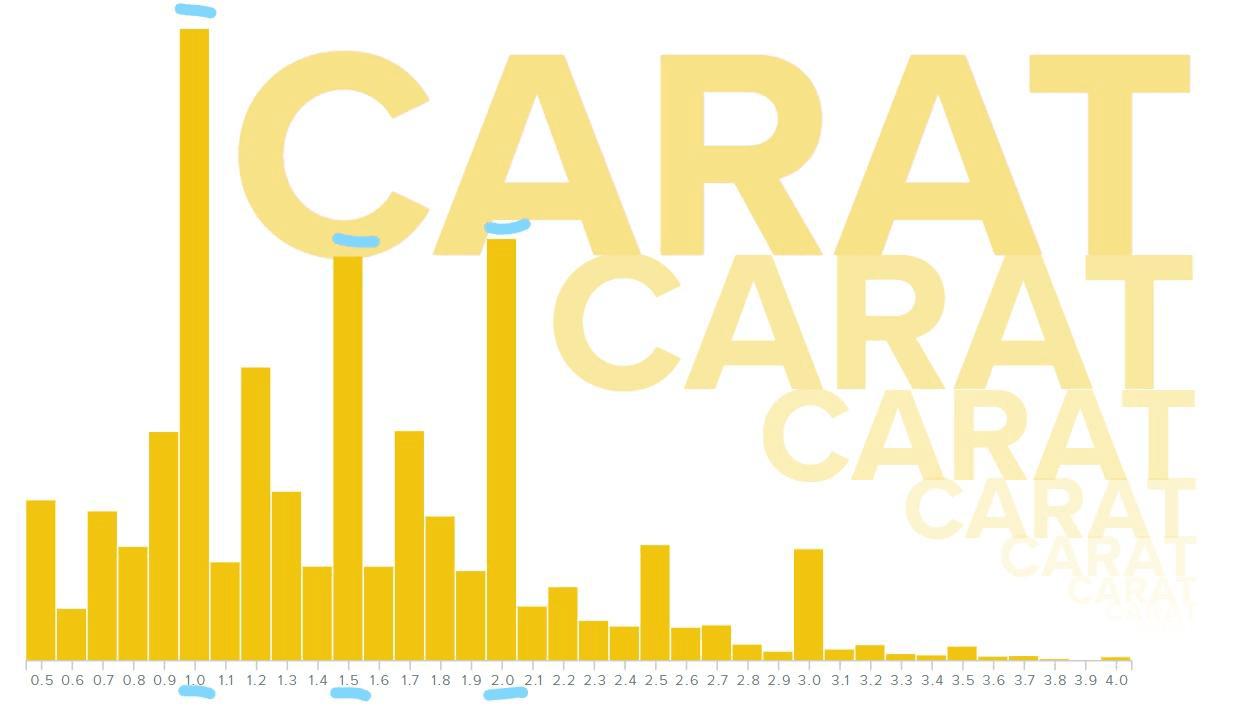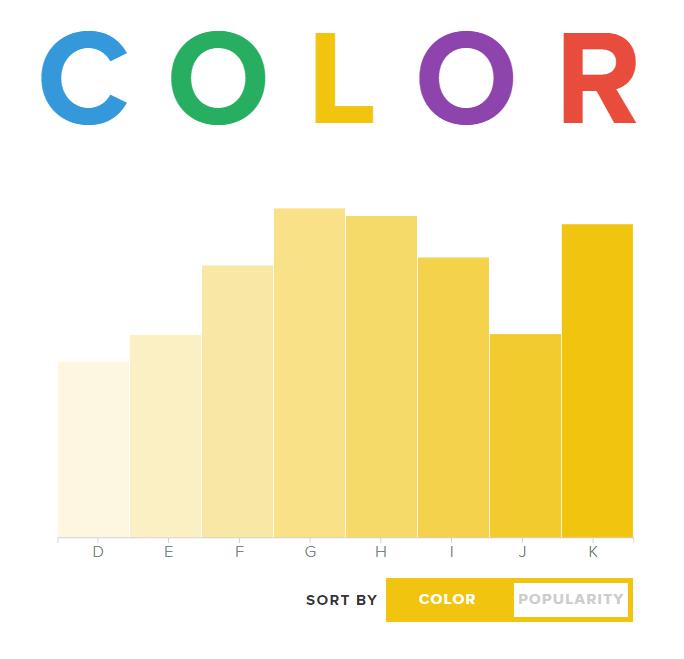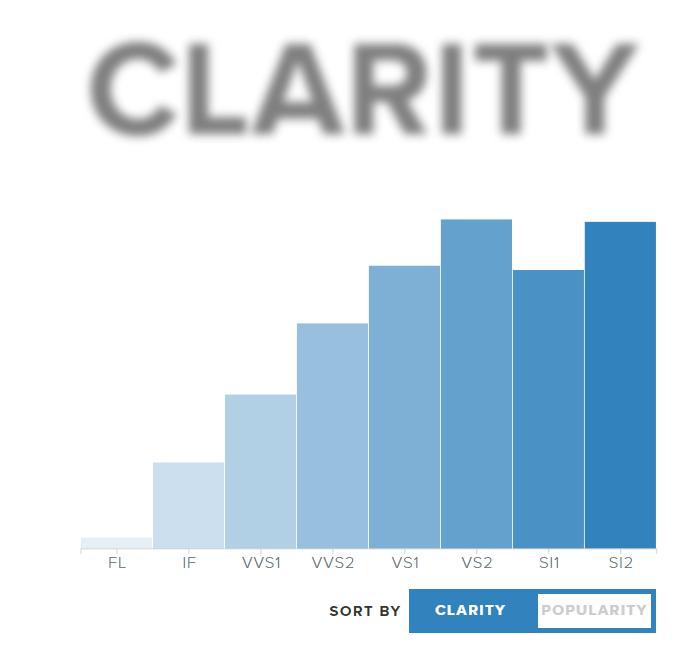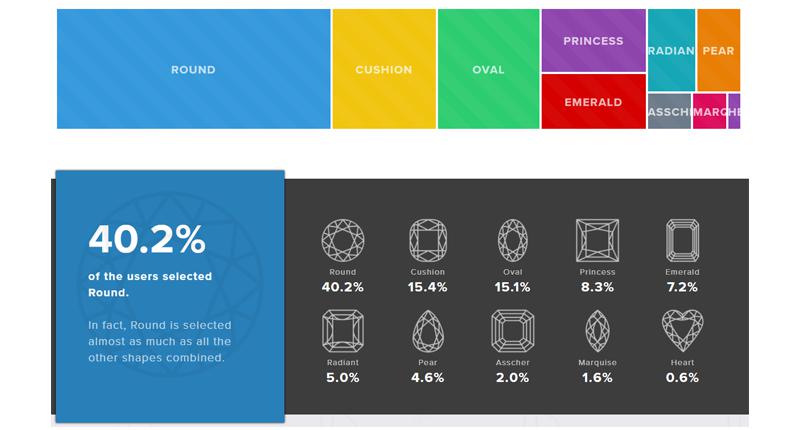Diamonds and Settings - Get the Biggest Bang for your Buck
Do you want it all? And do you want it now? Well then, you’re either Freddie Mercury or your trying to get the best possible bang for your hard-earned bucks. If you are the former, I’m not going to lie… I am a tad surprised. However, if you are the latter then you have most certainly come to the right place!
1. Cut the Crap
Do not think that you can save money by sacrificing on ‘cut’. It is a fool’s errand my digital friends! To explain why this is so, let’s first think about the difference between the weight of a diamond and the size of a diamond. The weight of the diamond is measured in carats and is easy to calculate.
The size is different story altogether though, and varies wildly between diamonds – even those of the same carat weight! So, you could have three 1ct diamonds, all of different ‘sizes’ simply because of the way each stone was cut.
A ‘deep cut’ diamond looks like an iceberg, meaning all that precious weight is sitting under the stone, ultimately hidden by the ring setting it will live in.
Now, a ‘shallow’ cut might seem like a clever way to keep the weight and make a diamond appear bigger. To an extent this is technically true, as the weight of the stone is right up on top where it can be seen and envied by all who gaze upon it. However, there are serious downsides to a shallow cut diamond, one of the worst being a significant loss of sparkle and brilliance.
It’s simply a no-brainer to choose the best cut possible for your diamond. For a GIA graded diamond that means going for an ‘excellent’ cut, while other labs use the term ‘ideal’.
Want to learn more about the importance of cut? Of course you do, you diamond-researching machine! Click here.
2. Be Clever about Carat
Our data on diamond trends here at Rare Carat shows you what’s hot, and what’s not in the diamond world right now.
The downside for me though, is that I can see in real time the potential mistakes people might be making, especially when it comes to the carat weight of diamonds. Have a look below at the nifty screenshot I took of our data on the most popular carat weights and then I’ll explain:

Let’s have a look at what’s going on here. Three main spikes standing out here right? The first at 1ct, the second at 1.5ct and the third at 2ct. Folks are looking for lovely large diamonds and I’m all about it! The problem is that the spikes are sitting pretty much on the dot of the 1ct/1.5ct/2ct mark. This is a mistake. These are what’s known in the biz as ‘magic sizes’, meaning these are the exact points at which the price of diamonds takes a significant jump up.
The result is that the price difference between a 1.4ct and a 1.5ct will be steeper than the difference between a 1.3ct and a 1.4ct. I would have much preferred to see those spikes at 0.9ct, 1.4ct and 1.9ct respectively, because those carat weights sit just before the magic jump in price.
If you click here you can read much more about how this carat malarkey works. That way you can be prepared and not fall into the ‘magic’ size trap of those who have searched before you.
3. Be Clever about Color
While I was just a little disheartened by the carat trends above (insert sad face emoji), I am happier to see that I-K colors are getting a chance to shine:

Don’t be shy about those lower colors, they are a great way to free up some of your budget that you can then dedicate to a bigger carat weight or a higher clarity! I personally love ‘I’ colors because they are a little cheaper but still look fantastic, although I could be persuaded to buy a ‘J’ or even ‘K’ color provided the setting worked with – rather than against – the stone (for example avoiding a white gold setting as it would emphasize the color in the diamond).
I have written extensively on each color for your reading pleasure, so simply click here to learn more.
4. Be Clear on Clarity
The clarity of a diamond is yet another place where you can juggle around with the 4 C’s until you find your perfect balance. Is color more important to you? Go lower on clarity. Do you want a bigger diamond and not so bothered about a little inclusion (that you most likely won’t be able to see anyway)? Go lower on clarity. I’m happy to see that many have in fact been doing that, as you can see here from our data:

Those VVS’s and even VS’s are simply not needed guys and gals. Pinch those pennies here and make it rain on carat size or color instead.
5. You Better Shape Up
Round diamonds are classic. Round diamonds are timeless. Round diamonds are very popular, as you can see from our data:

The problem is, round diamonds also cost more than their fancy-shaped counterparts. Fact. If you have a set budget, then I would suggest breaking away from round and try out an oval/cushion/princess if you can!
With those shapes you can actually get a slightly bigger diamond for the same price. You could even go slightly smaller on size with these little beauties and they will still look impressive, thus leaving you extra wiggle room in the old budget to go elaborate on the setting.
I went for a cushion myself, and never regretted it. Read all about the different diamond shapes here.
6. Get Setting-Savvy
Let’s discuss settings! The type of setting you choose can do wonders for a diamond, and more importantly for your budget. The right setting can hide a multitude of sins, it can distract from certain character flaws a diamond might have, and can even make your diamond look a heck of a lot larger than it is IRL.
Did you buy a diamond with an unsightly inclusion near its edge, because you saved lots of dosh doing so? Cover it with a strategically placed prong! A teeny tiny feather on the girdle (outer ridge) of the stone? With the very best of intentions that might chip someday. But not if you pop it in a ‘bezel’-style setting! Hidden from view, and more importantly safeguarded from any bums and bangs that could chip it.
A ‘halo’ setting is a foolproof way of adding precious millimeters on to the look of your diamond, because the little row of diamonds around the center stone adds mega sparkle as well as that all-important bulk or ‘spread’ across your finger. A 'pave'-style band can bling up that ring no end too, as those teeny tiny stones along the band can take any diamond from beautiful to downright spectacular.
Summing it Up
In conclusion, there are lots of ways to get the biggest bang for your $$$. Don’t get dazzled by the highest colors and clarities. There are deals to be gotten on those fronts. Don’t automatically go for those ‘magic’ sizes, because you may be missing out on diamonds that are slightly smaller (or even bigger) which are a far better deal. Be adventurous with shape, no need to settle for round, when you could have a snazzy cushion/princess/oval. Utilize all the tricks that a setting can provide for you; hiding inclusions, muting the color in higher-toned stones, and even making your diamond look bigger.


Budget-Savvy Diamond Buying FAQs